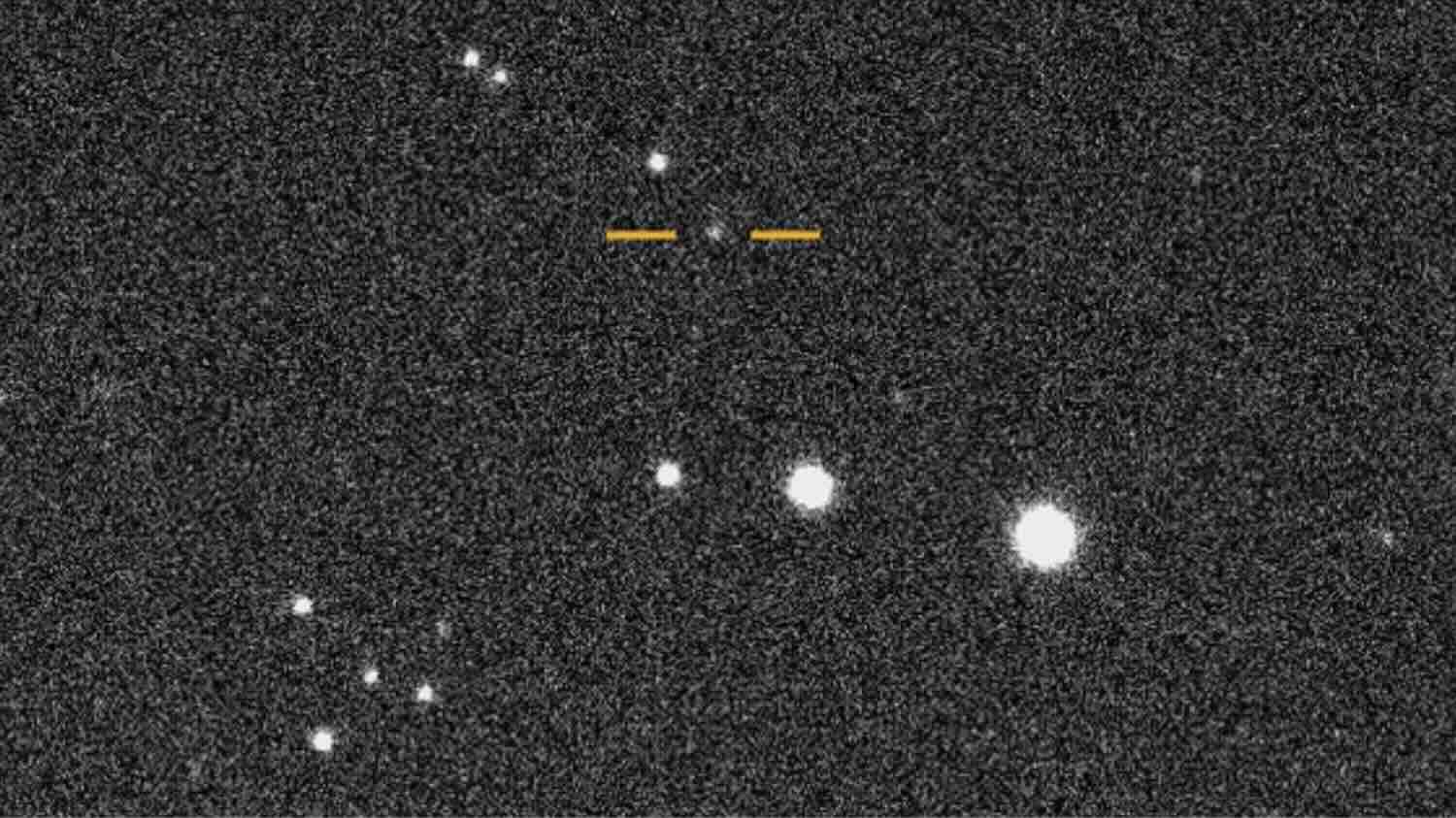Hidden by the Sun’s powerful glare, a new space object has been discovered lurking in our Solar System, and astronomers say it is one of the fastest-moving objects of its kind.
The speeding asteroid, dubbed 2025 SC79, was discovered in the region of space where the Sun’s blinding light makes such observations exceptionally difficult.
Discovered by Carnegie Science astronomer Scott S. Sheppard, 2025 SC79 completes its journey around the Sun every 128 days, making it the second-fastest asteroid known in our Solar System.
A Stealthy, High-Speed Space Object
2025 SC79 is unique for reasons other than its difficult-to-spot location and high-speed trips around the Sun. It also happens to be the second object astronomers have discovered that has an orbit inside of Venus.
 In the images above, 2025 SC79 can be seen moving relative to background stars on the night of its discovery (images courtesy of Scott Sheppard/Carnegie Science).
In the images above, 2025 SC79 can be seen moving relative to background stars on the night of its discovery (images courtesy of Scott Sheppard/Carnegie Science).
The unique asteroid also traverses the orbit of Mercury during its speeding Solar journeys, making its speed second only to a 2021 discovery—also made by Sheppard and his colleagues—which revealed asteroid 2021 PH27.
2021 PH27 also has one of the shortest orbital periods of any known space object, second only to planet Mercury. Due to the extreme proximity to the Sun of objects like it and the newly discovered 2025 SC79, they undergo the most extreme relativistic effects of any objects known to exist in our Solar System.
According to a statement accompanying the discovery, Carnegie Science’s Magellan telescope, as well as the National Science Foundation’s Gemini telescope, were used to confirm the detection of 2025 SC79.
Hidden Threats Near the Sun
Sheppard is uniquely positioned to make such discoveries, since his work focuses on objects like planetary moons, so-called “dwarf planets,” and asteroids. However, with the discovery of these lurking space objects hidden in the Sun’s glare, which astronomers sometimes call “twilight” asteroids, his work also plays a fundamental role in the detection of objects that are potentially at risk of impacting the Earth.
One of the most notable examples of a space object taking Earth off guard with its approach from the direction of the Sun was the 2013 Chelyabinsk meteor event, which was famously documented by dash cameras in vehicles and other cameras while going unseen by astronomers. Of course, coming from the direction of the Sun makes it very difficult—if not impossible—for such objects to be detected beforehand while obscured by the powerful glare.
The event served as a wake-up call for astronomers and prompted planetary defense efforts like those now conducted by Sheppard to help reduce the likelihood that we will be taken off guard by the arrival of such objects in the future.
“The most dangerous asteroids are the most difficult to detect,” Sheppard recently said.
Twilight Asteroids
“Most asteroid research finds these objects in the dark of night, where they are easiest to spot,” he says, although “twilight” asteroids draw their nickname from being objects that can only be observed during twilight due to their proximity to the Sun.
“If these ‘twilight’ asteroids approach Earth, they could pose serious impact hazards,” he says.
In Sheppard’s work, which receives funding from NASA, the National Science Foundation’s Blanco 4-meter telescope and its specialized Dark Energy Camera is employed to search for any potentially deadly asteroids that may similarly be lurking in the Sun’s glare.
Beyond the detection of potential “planet killers” hiding near the Sun, the research also contributes significant information about the formation of our Solar System and its current makeup.
Future Observations and Possible Origins
Presently, 2025 SC79 is on its making its way behind the Sun, where, just like the interstellar comet 3I/ATLAS, it will remain invisible to astronomers for the next several weeks.
However, future observations will help astronomers like Sheppard reveal clues about 2025 SC79’s composition, as well as how the object can withstand the imposing heat produced by the Sun at such close distances.
Sheppard says that a large number of similar objects in our Solar System inhabit one of two primary asteroid belts, although changes that occasionally occur with them can sometimes send objects into much closer orbits, which makes them even more difficult to detect.
“Understanding how they arrived at these locations can help us protect our planet,” Sheppard says, “and also help us learn more about Solar System history.”
Micah Hanks is the Editor-in-Chief and Co-Founder of The Debrief. A longtime reporter on science, defense, and technology with a focus on space and astronomy, he can be reached at micah@thedebrief.org. Follow him on X @MicahHanks, and at micahhanks.com.


